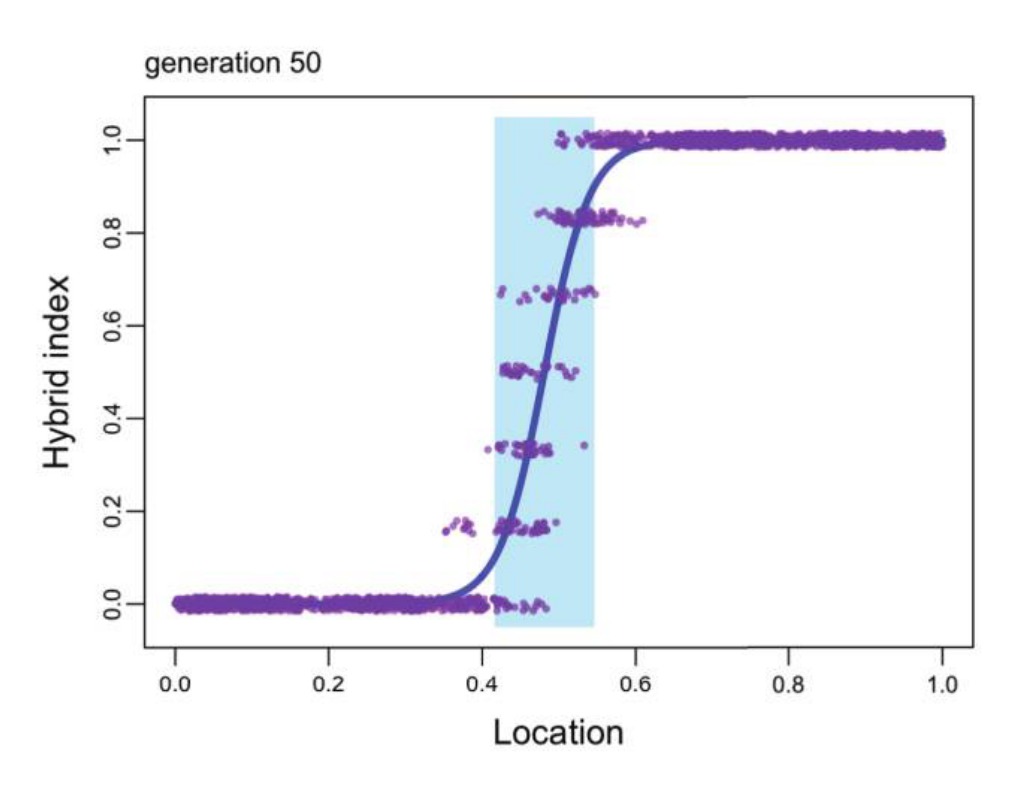Darren’s simulation study of the effects of assortative mating and low hybrid fitness on hybrid zones was published this week in The American Naturalist.

The citation:
Irwin, D.E. 2020. Assortative mating in hybrid zones is remarkably ineffective in promoting speciation. American Naturalist, published online May 4, 2020: Link
(earlier version posted on bioRxiv: Link )
The Abstract:
Partial prezygotic isolation is often viewed as more important than partial postzygotic isolation (low fitness of hybrids) early in the process of speciation. I simulate secondary contact between two populations (species) to examine effects of assortative mating and low hybrid fitness in preventing blending. A small reduction in hybrid fitness (e.g., by 10%) produces a narrower hybrid zone than a strong but imperfect mating preference (e.g., 10 times stronger preference for conspecific over heterospecific mates). In the latter case, rare F1 hybrids find each other attractive (due to assortative mating), leading to the buildup of a continuum of intermediates. The weakness of assortative mating compared with reduced fitness of hybrids in preventing blending is robust to varying genetic bases of these traits. Assortative mating is most powerful in limiting blending when it is encoded by a single locus or is essentially complete, or when there is a large mate search cost. In these cases assortative mating is likely to cause hybrids to have low fitness, due to frequency-dependent mating disadvantage of individuals of rare mating types. These results prompt a questioning of the concept of partial prezygotic isolation, since it is not very isolating unless there is also postzygotic isolation.
To see videos of example simulations, see here.
Ethan Linck converted the HZAM code to a web app where you can play with the parameters and watch how the model responds.
